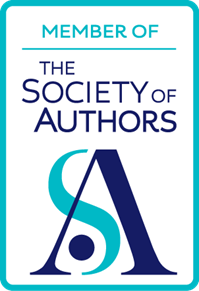Cine camera by Terry Freedman
You may not believe this, but film-making and film studies on the one hand, and writing on the other, have a great deal in common.
Many, many moons ago my hobby was movie-making — hence the photo of the rather archaic-looking cine camera on the right.
When working on a film, I had to answer a series of questions. I hadn’t consciously thought about this until a year or so ago when I started to attend film study classes at both the City Lit and the Bishopsgate Institute in London.
I signed up to the courses because I thought that learning to “read” a film would help me both in my reading of literature and my writing. My thinking was that it would help with the former because I would learn to become more critical and aware — not critical in the negative sense, but in the more academic sense of seeing, understanding and questioning more carefully. I thought it might help with the latter because I fancied there may be parallels between the process of crafting a film, and that of crafting a piece of writing.
I was correct on both counts. As I came to realise — especially from Hilary Smith’s classes at the Bishopsgate — that writers and film-makers (or film study students) have to answer similar questions:
Who is the intended readership/audience?
What effect (emotion/feeling/understanding) do I wish to create in the reader/viewer?
How can I achieve that/what techniques do I have at my disposal? Writers have adjectives, word pictures, metaphors and so on; film-makers have lighting, music, camera angles and so on.
It’s interesting to me that in films, the director’s influence is so great that he or she is known as the film’s auteur — French for author. Putting this another way, it’s not the scriptwriter who is known as the author, it’s the director.
Another aspect of all this that I find interesting — fascinating, actually — is how focusing your attention on a completely different field can help you see your own field differently. You start to see parallels that may not otherwise have occurred to you.
As an example, in the film studies course called British Cinema of the 1980s at the Bishopsgate, we were introduced to the work of the director Derek Jarman. Now, in his film Caravaggio, Jarman plays with anachronistic elements such as having someone using a typewriter, jazz music and smoking. (The film is set in the 16th century.) Some of the scenes in the film are tableaus of famous paintings. The anachonisms, combinations of old and new, and the tableaus reminded me immediately of the literature movement known as Oulipo — see my review of The Penguin Book of Oulipo. Consider the following elements found in Oulipian writing:
Anachronism. One of the things members of the Oulipo have done is explored Oulipian texts that were written before the Oulipo was conceived. This is obviously anachronistic, and often referred to as ‘anticipatory plagiarism’. An example of a short story where this idea is made explicit is The Winter Journey, by Georges Perec.
Combinatorics. This is the use of combinations, a mathematical concept, to create a narrative. An example of this is Italo Calvino’s short story, The Burning of the Abominable House, in which the protagonist has a list of 12 crimes, and 4 people. It is not known which of those people is/are the perpetrator(s), and who the victim(s) (because the house in which the crime(s) occurred has been burnt down). Therefore there are 12 to the power of 12 combinations (apparently), giving rise to a total of 8,874,296,672,256 possibilities.
Definitional, in which something is written in the style of something else. An example of this would be Queneau’s Exercises in Style. Another example would be my own article, Inspection Of A Computing Department In The Form Of A Really Bad TV Documentary.
(All of these examples, with the exception of my own article of course, may be found in the Penguin Book of Oulipo.)
If you know the film Caravaggio you will understand why I draw these parallels with Oulipo. Might it be possible that Derek Jarman knew of the Oulipo, and wished to apply some of their techniques to the making of his film?
I don’t know the answer to that question; perhaps nobody knows it. But isn’t it interesting that a knowledge of the Oulipo, which is a particular movement in writing, can put a particular kind of film in a completely different light?
My conclusion from this is that, if you are a writer, don’t study only writing. Look at other things too. For all I know, flower arranging might help you become better informed, and a better practitioner. Or car maintenance. Just try something new — and look for the parallels with writing.

